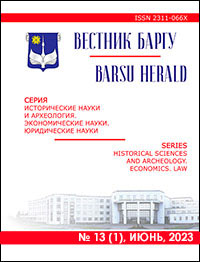ALGORITHM FOR MANAGING THE ECONOMIC INTERESTS OF STAKEHOLDERSIN HOUSING AND COMMUNAL SERVICES
Keywords:
institutional transformations; harmonization of interests; stakeholders; management algorithm; housing and communal servicesAbstract
The best world experience of interaction between institutions of paternalism and competition in housing and
communal services has been studied. This study allowed us to present a scheme for harmonizing the economic interests
of stakeholders, as well as to justify the indicator of the level of paternalism in the social policy of the state. This indicator
is calculated based on the trigonometric arctangent function. This indicator is supposed to be used as a target function
of the mechanism of harmonization of economic interests of stakeholders.
The article shows a combination of administrative and market institutions of regulation the sphere of housing and
communal services. This allowed us to substantiate the specifics of the transition from one institution to another and to
establish transactional, institutional costs, as well as the costs of institutional transformation.
The algorithm for managing the economic interests of stakeholders in housing and communal services was proposed.
This algorithm consists of interrelated stages, on the basis of which we will propose a trajectory of institutional transformations.
The trajectory of institutional transformation is a process of sequential transition from one institution to another.
Fig. 7. Ref.: 3 titles.
Downloads
Published
Issue
Section
License
Copyright (c) 2023 Вестник БарГУ Серия "Исторические науки и археология. Экономические науки. Юридические науки"
Это произведение доступно по лицензии Creative Commons «Attribution-NonCommercial» («Атрибуция — Некоммерческое использование») 4.0 Всемирная.
Авторы сохраняют за собой право заключать определенные договорные соглашения, касающиеся неисключительного распространения опубликованной версии работы (например, размещать ее в институциональном репозитории, публикация в книге) со ссылкой на ее первоначальную публикацию в этом журнале.





